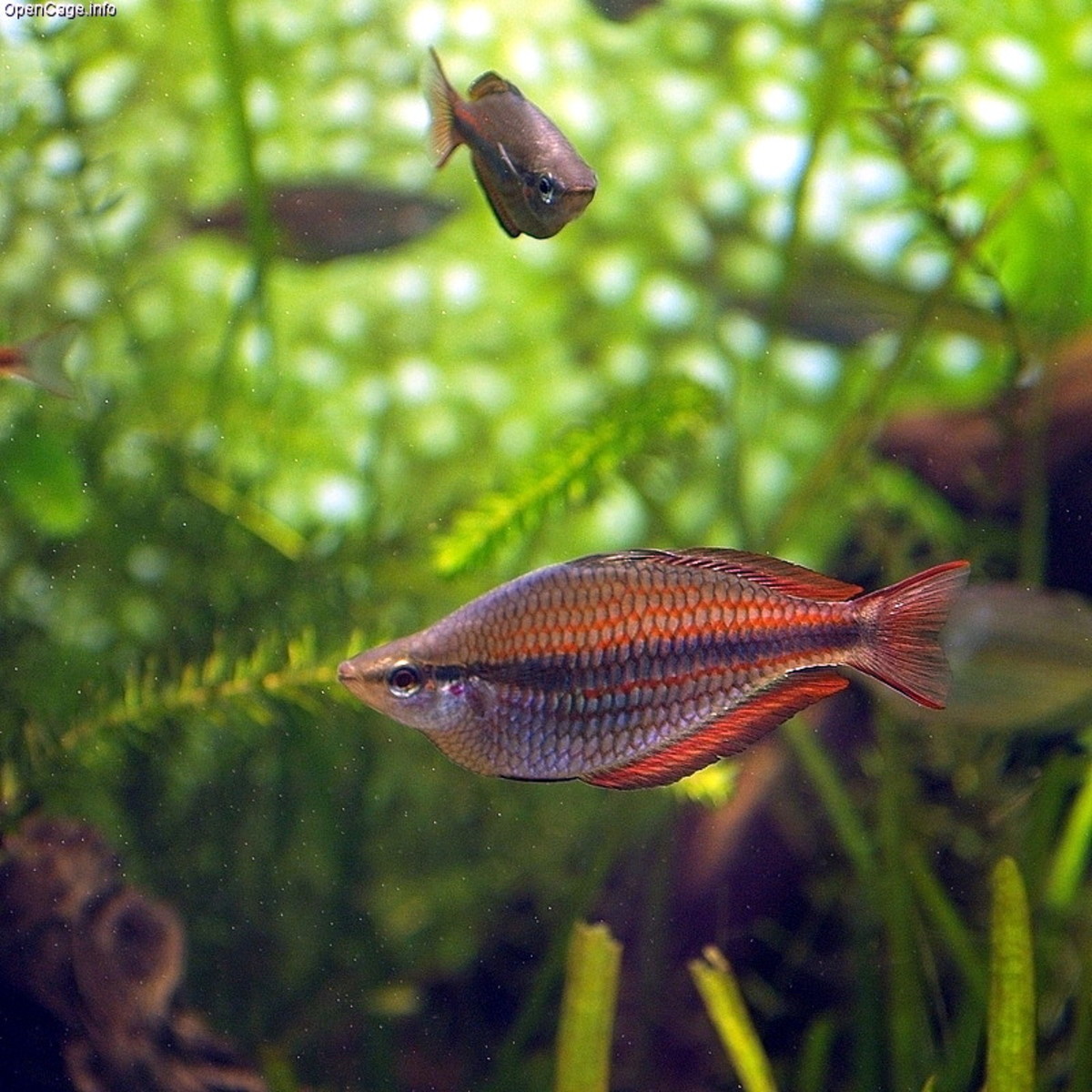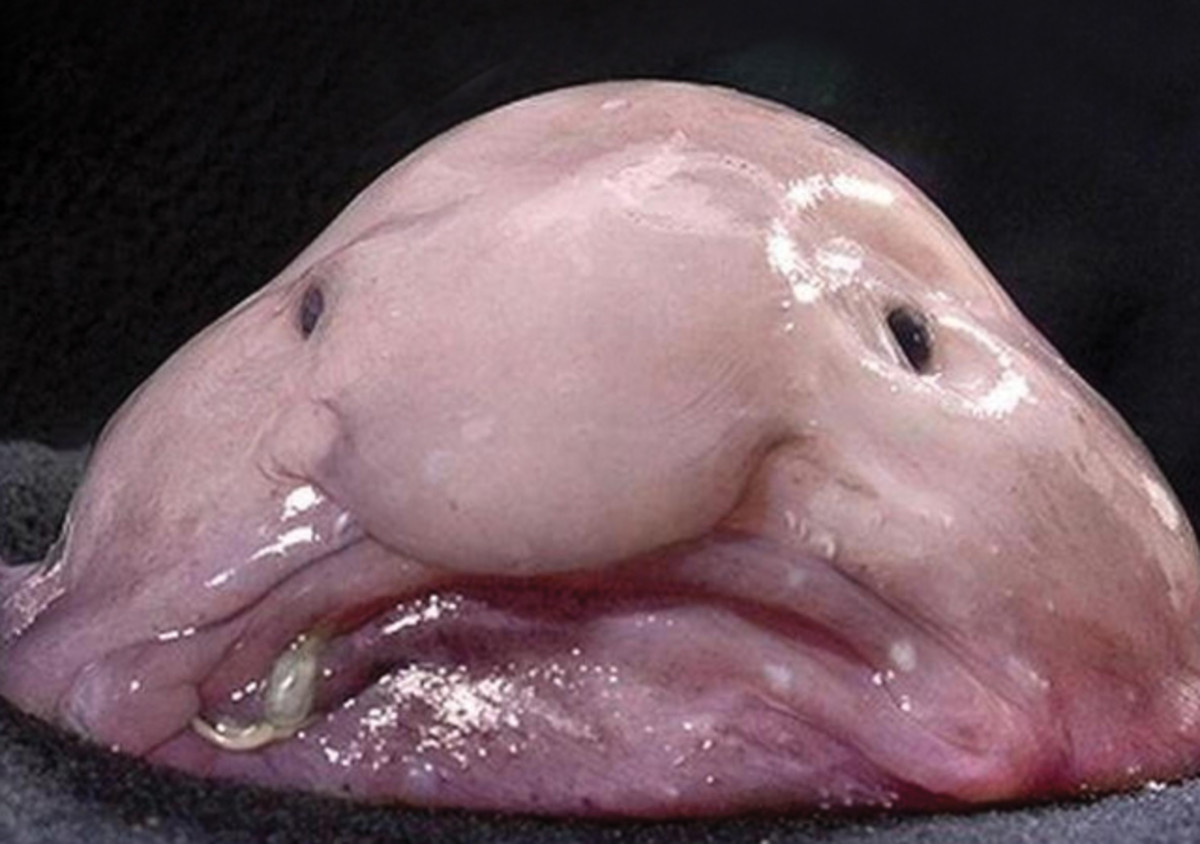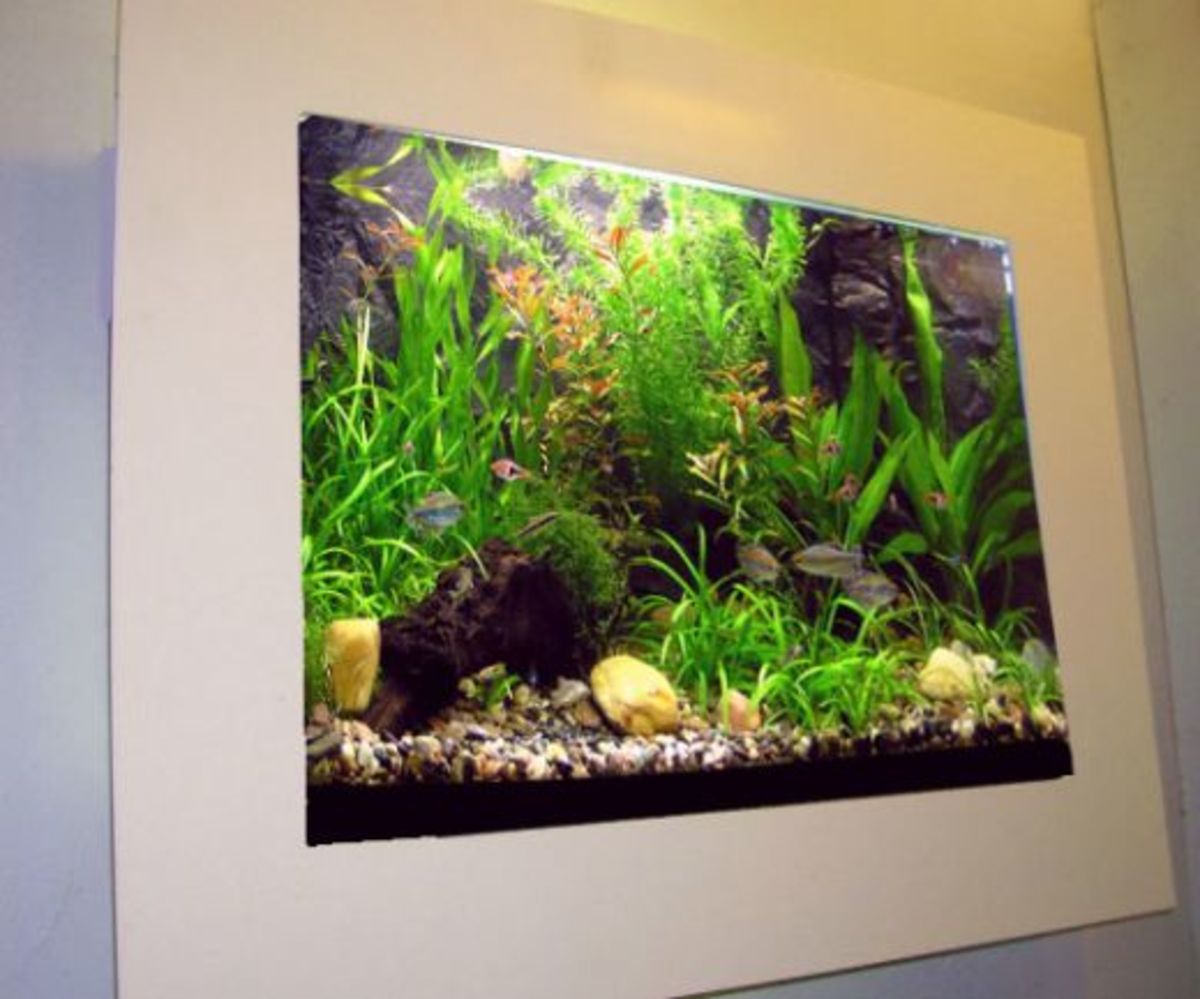The Wonderful World of Bettas - Raising Fighting Fish for Fun and Profit
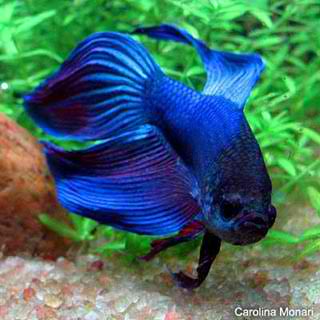
The Beautiful Betta - its unique features
There are thousands of varieties of tropical fish. Not all of them are suitable for aquariums. Many years ago, I came upon the beautiful Siamese Fighting Fish or Betta. These tropical fishes are natives of Thailand and Cambodia, and live in shallow rice paddies and rivers. They belong to the anabantidae family - a group of fishes that have a labyrinth organ that they use to breath atmospheric air. This is why keeping and raising bettas is so easy and convenient. You don't need a big tank with expensive filters and oxygen pumps. Your Siamese fighting fish can live and survive in a fruit jar with 2 glasses of water. Although this does that mean that this is the best environment for them. If you give them a nice tank with ample lighting, some planted and floating plants, and a nice filtration system - they will reward you with their beautiful fins and rich, deep hues.
The fighting fish, as its name implies, is aggressive towards other males of the same species, and will often fight to the death. Sometimes during mating the male will accidentally kill the female, especially if the female refuses to mate. This is why young male bettas should be kept in separate tanks or in tanks with glass dividers. Back in the 70's young guys (I was one of them) had lots of fun placing bets and watching our bettas fight and nip at each other fins and tails. The loser is the betta who is the first to run away. Sometimes bettas can be fatally injured during these 'fish fights', but oftentimes it ends when one of the contestants chickens out and refuses to fight any longer.
Nowadays, people find more pleasure in raising bettas for the beauty, instead of the fighting abilities. Showing off your betta, with its long and flowing fins and deeply distinct coloring and comparing it with your others friends' bettas is a much more peaceful and gratifying way of enjoying your hobby. And I'm sure the fish appreciate it too.
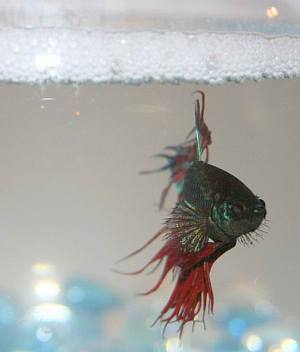
How do Bettas Breed?
The first time I witnessed the Betta's breeding process, I was fascinated and couldn't keep my eyes off my fish tank. It is an experience that not everyone knows of or has witnessed. As their keeper, you have a part to play in their breeding efforts. This is one of the pleasures of owning bettas. Although I've read books on bettas and other tropical fishes throughout the years, what I'm going to share with you is based on my actual experience - something I've witnessed with my own eyes and experienced personally.
WATER CONDITIONS
For bettas to breed properly, they need certain water conditions. Since their original habitat is in the rice paddies of Thailand and Cambodia, they like water that's almost murky. We call this 'soft' water, which means it has slightly acidic. A pH level of around 7 or 6 is pretty good. Anything lower than that is bad for the fish. Just to give you an idea, Coca-Cola has an acidity level of 3.4, which is acidic enough to dissolve teeth and bones. On the other hand, detergents and bleach have a high pH level of 11, which is very alkaline and can burn your skin. So keep the water pH of your bettas tank around 6 or 7.
How do you do that? Well, most pet stores have what is called 'anti-chlorine'. A few drops of this liquid in a gallon of water removes the chlorine bleach from ordinary tap water and makes it safe for your Betta. Remember to put in the drops before putting the fish in the water. For a 10 gallon tank, you'd need around 5 to 7 drops.
Keep the water temperature around 70 degrees Fahrenheit. This mimics the tropical heat of their environment. Although Bettas can survive in cooler climates, warm water motivates them to start breeding. There are heaters available in pet stores or you can create your own. Here's a simple way to make a heater: get a 6-inch test tube with a rubber stopper. Next, take a few bulbs including the wiring from some old christmas lights (6 or 7 bulbs will do) and run the wire through a hole in the rubber stopper. Dip the lower half of the test tube into the water and plug it into a wall socket. Make sure the water doesn't get inside the test tube.
Another technique I use to condition the aquarium water is to add 'Blackwater Extract' from Tetra. Just a few drops of this brown liquid, which is made up of peat moss, driftwood and other softeners is enough to turn your fresh water into a soft, marshy, river-like water. Perfect for the Bettas!
You'll know if your water is soft enough and the temperature is warm enough when your male bettas start blowing bubbles on the surface of the water. They are instinctively building a nest for their future fry. To help them with this, place a 3 x 3 inch piece of wax paper or maybe a fresh leaf on top of the water. When your Bettasees this, he'll take it as a cue to start building his nest bubbles.

Introducing the Female Betta
After a few days of building his bubble nest, it will be quite big and puffy. Sometimes up to 2 inches above the water! This is the perfect time to introduce the female Betta into the tank. Place the female in a small transparent cup and let it float in the aquarium. The reason for this is so that she can excite the male with her appearance while at the same time be protected from his aggressive advances. The male will become very vigorous at this time, showing off his deep and rich colors and spreading his fins to the max, to attract the female. The female responds to this 'show' by changing her colors as well. If you have a pale red female, she will become deep red during this process. Let this mating dance go on for about 3 days. Then you will notice that the females abdomen starts to get bloated. This means that her eggs are starting to form. You'll know when she's ready to mate when her abdomen seems like it's about to burst, and a small white tube comes out of her bottom. This is called the ovipositor.
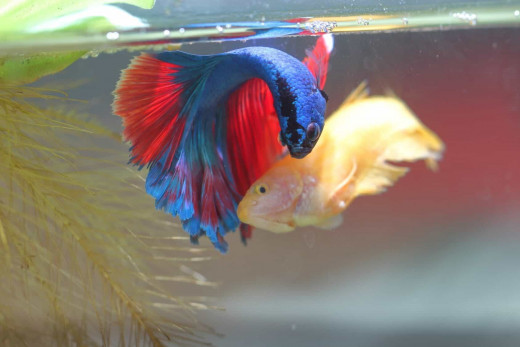
The Actual Mating Dance
So the male's nest is now beautifully made, with hundreds of sticky bubbles under that wax paper or leaf that you placed in the tank. The female is about to burst, her abdomen full of little unfertilized eggs. Now is the time to remove her from the small cup and put her in the tank with the male. Watch this process closely. The male will become very excited and aggressive, displaying full fins and deep colors.The female, on the other hand will just wait for the male's advances. The male betta will spread his gills as if in attack, wiggle his pelvic or ventral fins, or nip at the female to convince her to join him below the nest. After a few moments, she will eventually follow him to the nest.
THE EGG-LAYING PROCESS
As soon as the female Betta is under the nest, the male will start to wrap his body around her, making sure that his sex organ (it's a small white thing under his belly) is right next to the female's ovipositor. As he squeezes the female's belly, the eggs will ooze out of her, and at the same time the male will release his sperm and fertilize the egg. The female then 'lays' immobile as the eggs begin to drop to the bottom of the tank. The male Betta picks the eggs up one by one with his mouth, then spits them out onto the bottom of the nest. The eggs will stick to the nest because the eggs and the next are both coated in sticky mucus.
This squeezing and fetching process is repeated several times until the female's egg supply is completely exhausted. You'll know this because the male will suddenly lose interest in the female and may even start hurting her. This is the time to remove the female from the tank and put her in a separate bottle. Don't forget to put a few drops of 'Methylene Blue' into her jar of water. This will help her wounds heal faster.
© 2011 mvallar

